* This information was gathered at the Ethnic Museum Buon Ma Thuot, April 2019
Dak Lak province
Dak Lak with an area of 13,125 km2 is a large plateau surrounded by mountains and valleys, resulting from volcanic activity 25-30 million years ago. Its major rivers are Srepok, runs through Yok Don National Park, Krong Ana and Krong No. These rivers all have hydroelectric dams in them to provide the area with electricity and are also used for fishing. The Lak lake covers more than 500ha and the overall ecosystem is rather diversified.
The predominant climate in the province is divided into two distinct seasons: the rainy season from May to October and the dry season from November to April.
In 2008, Dak Lak was covered by 547,493ha of natural forests of two major types. The broadleaf evergreen forest was mainly distributed in the south, northeast and northwest regions in the province. The second type of forest, which is mainly around here in Buon Don and Ea Sup and is called dry or Dipterocarp forest.
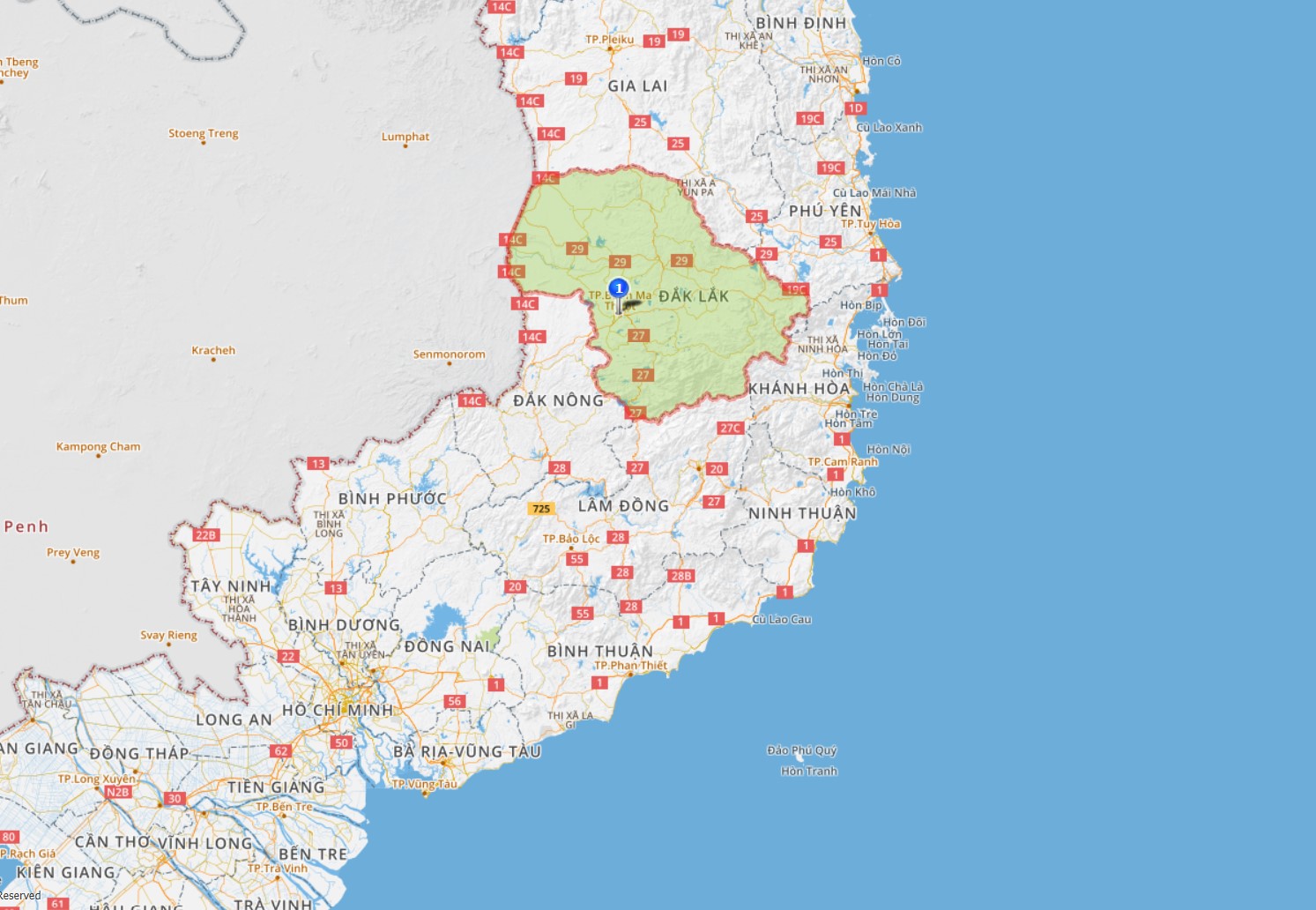
Dak Lak province on Vietbando
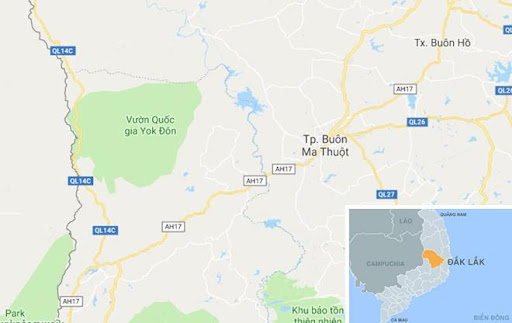
Location of Yok Don National Park
Indigenous people
Three indigenous groups of people live originally in Dak Lak province: Ede, Mnong and Jarai. The languages of the Ede and the Jarai belong to the Austronesia family and the Mnong language is Mon-khmer. Following a history of oral tradition, the use of writing in Roman letters was introduced in the 20th century.
The Dak Lak indigenous groups preserve special traditions expressed in gong music, architecture, sculpture, epic poems and buffalo sacrifices (rarely held nowadays).
The Ede, Mnong and Jarai retain the matriarchal’ structure of their society. Up to the 1980s, the large families lived together in long houses. The common law and community relationships are still important.
Funeral rituals
The funeral of the Ede, Jarai and Mnong Budong ethnic groups consists of two periods; the funeral and the tomb abandoning ritual.
The deceased, whose head is towards the east, lies in his house for 3 to 5 days. People observe rituals, play gongs, sing funeral songs and cry in order to show their feelings towards the dead. The coffins of these
minority groups are carved from an entire tree trunk. The Ede and the Mnong have individual tombs and the Jarai have collective ones. Every day, the relatives carry food to the tomb to “raise” the dead.
After 1 to 7 years, when the family has enough money, a tomb abandoning ritual is held to see off the “spirit” of the dead to the next world. A beautiful tomb is built with traditional wooden patterns. Objects are offered to the dead. The ritual takes place for 3 to 5 days with the whole community’s attendance. Depending on the family’s condition, buffaloes, cows or pigs are sacrificed. People play gongs, dance, drink rice beer and eat traditional dishes. After the ritual, the relatives won’t visit the tomb anymore and the mourning is over.
A local cemetery can be found up the road from Yok Don National Park entrance and can be visited. Please respect local culture, dress appropriate and behave in a respectful matter. Please do not take or move any items on and around the tombs.
Gong Music
Dak Lak is in “the area of gong culture of the Central Highlands” certified by UNESCO in 2005 as a “masterpiece of oral and intangible heritage of humanity”.
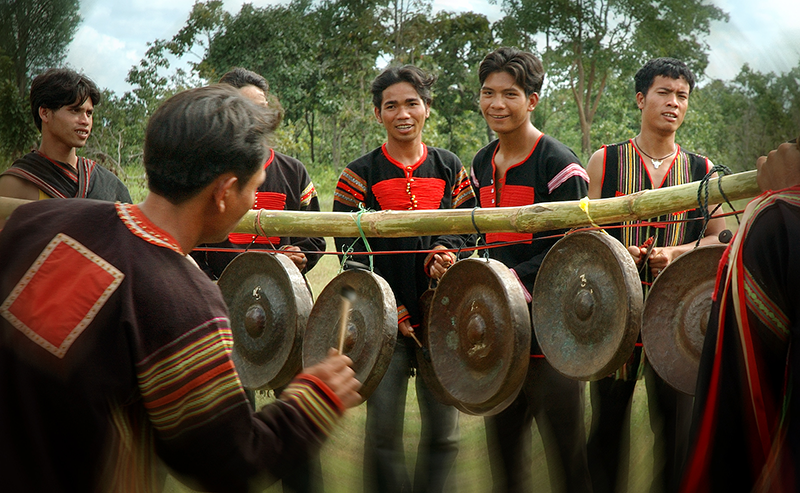
Gong music
A set of gongs includes at least 3 nipple or flat gongs. Each gong is named after family relationships such as the grandfather gong, mother gong or father gong. The Ede ethnic group play a set of 3 nipple gongs and another set of 6 flat gongs called knah and a drum. The Mnong ethnic group have a set of 6 flat gongs and a set of 3 nipple gongs. The Jarai ethnic group is famous for a set of 23 nipple and flat gongs called chinh arap, a drum, cymbals and hand bells. A soft wooden or cloth-covered stick is used to play the gong’s nipple side. For flat gongs, the Ede and Jarai use a stick to play the inside and the Mnong use their fists to play the external side.
Traditionally, gongs have supernatural power. Their sound can communicate people’s messages to the Spirit, Yang. Gong music is essential in the traditional rituals of the family and of the community.
Jars for wine
All indigenous people in Dak Lak use jars for “Can” wine, a kind of alcohol made by fermenting rice in a jar. It is drunk with a bamboo stem straw in traditional rituals and with special guests.
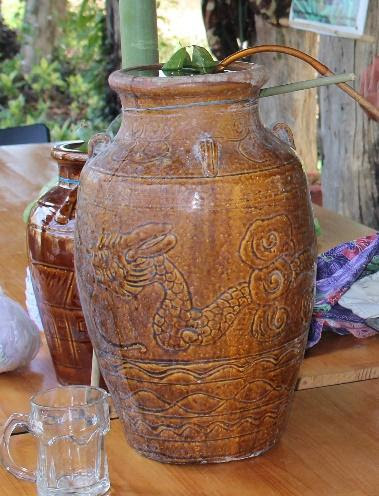
For these people, jars, as well as gongs, are valuable property. They are displayed in the houses or upon the tomb to express the owner’s economic and social status. In the past, the richer people were the more precious jars they had. The ancient jars were considered to have supernatural power and could be exchanged for buffaloes, cows or even elephants. Each ethnic group uses different kinds of jars with different names. The Ede use high and big jars called tuk, tang, ba, etc. The Mnong have round ones called yang bung. The jars were named after the decorations or shape such as tang krua which has a turtle shape and ako kra with monkey’s head handles.
Capturing elephants
In the early 20th century, taming elephants was an important activity in Dak Lak. Around 30 wild elephants were tamed every year. The Mnong in Buon Don, around the Yok Don National Park, were the most famous hunters. Capturing an elephant might take several days. One commander, numerous main hunters, assistants and 5 to 10 adult captive, already tamed, elephants would take part in the hunt. Tools for catching an elephant consisted of different lassoes or ropes made of rattan and leather, requiring the skin of 3 or 4 buffaloes.

A wild elephant was being trained. Photo: Kiem Lam Dak Lak
The hunters caught only young elephants, between 3- 6 years of age, by using the captive elephants to separate them form their family herds. The hunters would bring them back to their village and the process of taming would start. This process is called “breaking the spirit”, would take 2 or 3 months and is considered extremely cruel. By starving it, preventing it to drink, beating it and threatening it the spirit of the elephants is broken to make it obey a human owner. Next, they were familiarized with humans, trained to obey their commands and to carry goods and pull wood. A well-trained young elephant is regarded as a member of the village after an initiation rite. Annually. His owner celebrates the “God of Health” ritual for him, thanking the “spirits” for another good year of health.
The capturing of wild elephants and breaking them for captivity has been banned in Vietnam since 1996. All captive elephants currently living in Yok Don National Park were taken from their families in the wild and have gone through the taming process.
The captive elephants in the Yok Don National Park that are in the Elephant Experience Tour have been retired from working since July 2018.

Elephants when still serving the riding tour
 Animals Asia (27) resize.jpg) Yok Don elephants when they in Elephant experience tour
Yok Don elephants when they in Elephant experience tour

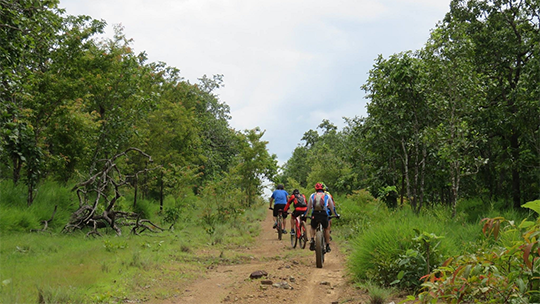
 7-8-2025 2.png)
 resize.png)
.jpg)
 1080x720.jpg)
.png)
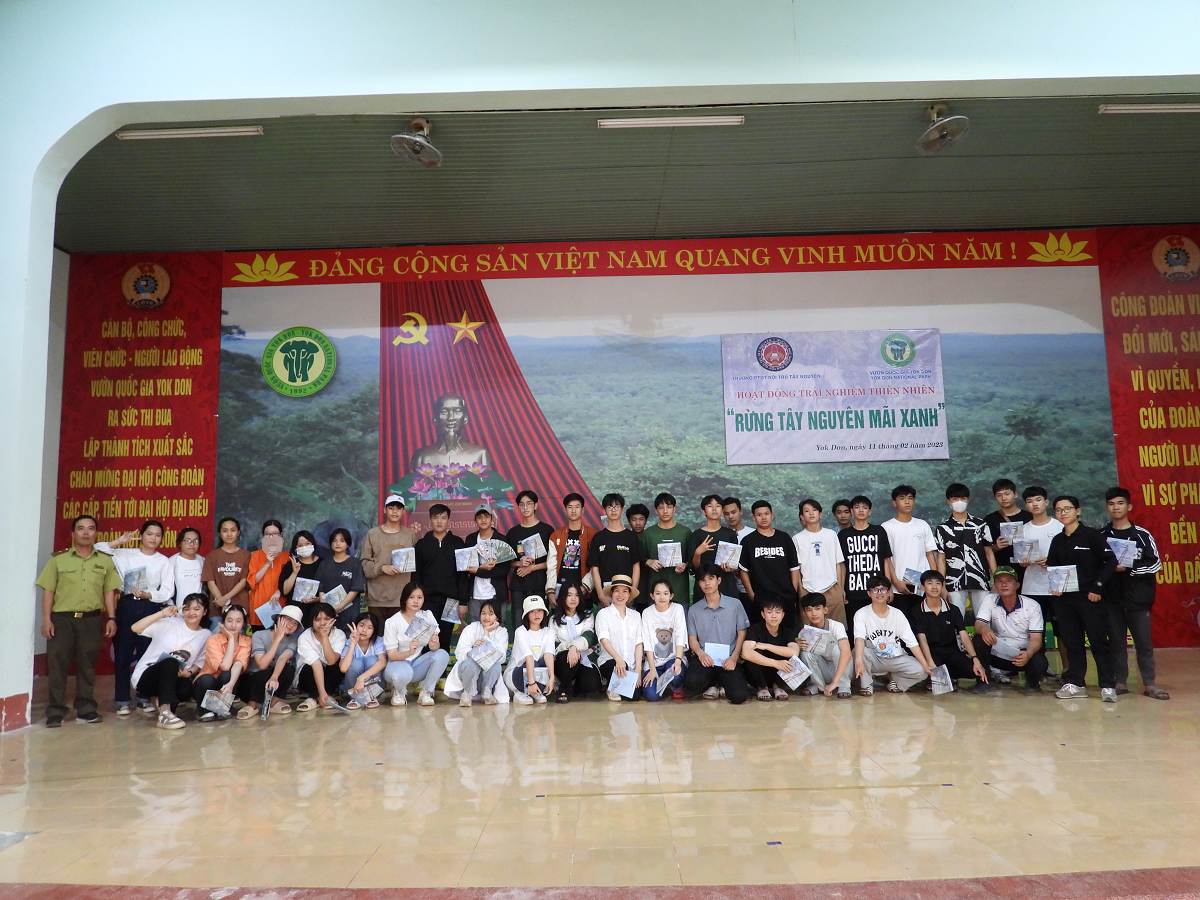
.jpg.jpg)
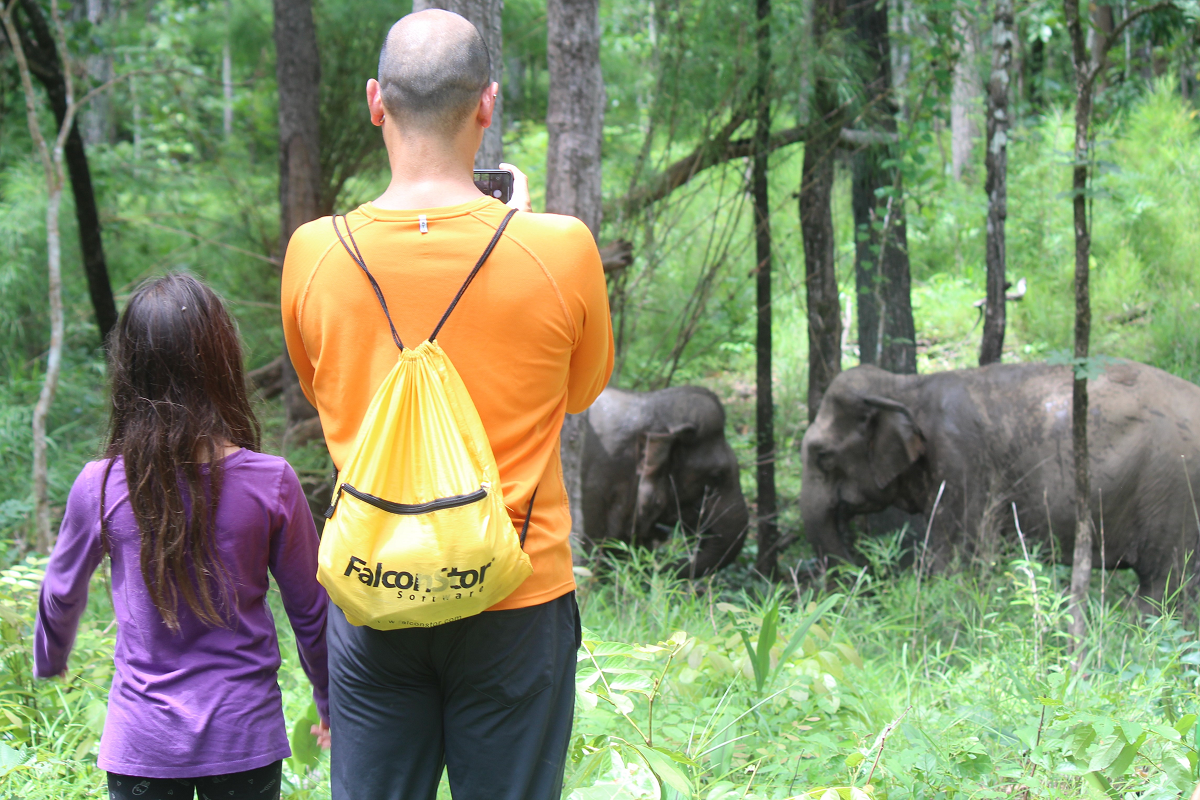
 resize.png)
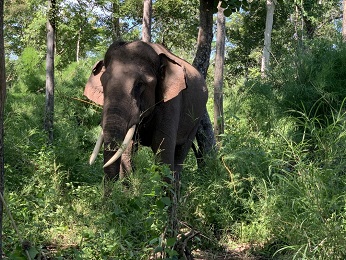
.png)